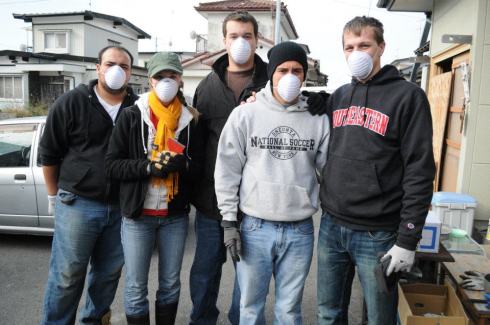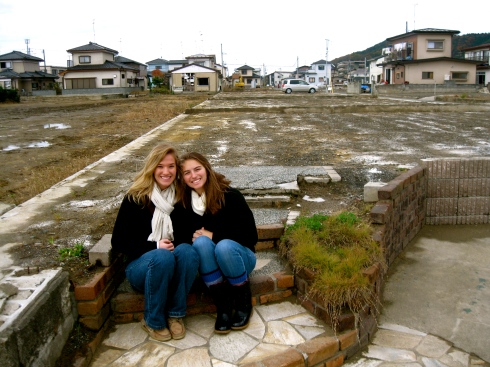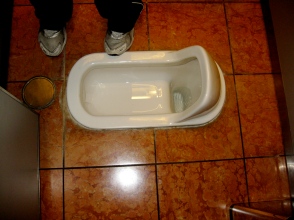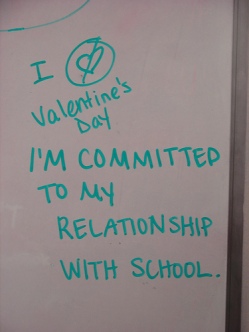 Today we got started with our work right away. We went to a home that had been destroyed by the tsunami in Ishinomaki to do renovations. From 9:30 am to 4:00 pm, we pulled out dry wall, took out screws and nails, tore up the floor, and then shoveled out the sediment which had been swept in there from the water (which was about a foot of dirt). Basically the only thing that we left was the frame of the house. Samaritan’s Purse hooked us up with the job and our project overseer, Jordan, who worked for Samaritan’s Purse “International Relief” actually had grown up in Japan and lived there for 18 years.
Today we got started with our work right away. We went to a home that had been destroyed by the tsunami in Ishinomaki to do renovations. From 9:30 am to 4:00 pm, we pulled out dry wall, took out screws and nails, tore up the floor, and then shoveled out the sediment which had been swept in there from the water (which was about a foot of dirt). Basically the only thing that we left was the frame of the house. Samaritan’s Purse hooked us up with the job and our project overseer, Jordan, who worked for Samaritan’s Purse “International Relief” actually had grown up in Japan and lived there for 18 years.
We worked hard all day, only stopping for lunch. But it was good work, I love seeing the product of my labor. While I was working, I was reflecting on the people of Japan and how amazing it is that such an advanced country can be so dead spiritually. These people are so relationship-focused, yet they are missing out on the most important relationship of all: a relationship with Jesus Christ. At the same time, there are many things we can learn from the Japanese. Although they may not be Christians, they are some of the nicest people I’ve ever met. They are very aware of other people’s thoughts and feelings and think about how their actions might affect someone else. Doesn’t the bible call for us to put the needs of others before our own?
A missionary in Japan’s journal in the 1600s said that the Japanese people were the “most ready to receive the Gospel”. But In 1603, the Tokugawa shogunate (military dictatorship) ushered in a long period of isolation from foreign influence in order to secure its power. For 250 years this policy enabled Japan to enjoy stability and a flowering of its indigenous culture, yet it was isolated completely from the world- no one allowed in or out. This killed the potential spread of Christianity in Japan.
After doing construction, we came back to the facility to a little party at the home we have been staying. Not all of our team went to do construction, so those who had stayed behind had invited people to a dinner at our house. We had about 20 people show up, so all together there was about 40 people here. At first, it was hard when some of the Japanese people showed up because it was difficult to communicate with them. I would go up, and say my name, and then they would say their names and I’d pronounce it a few times, trying to get it right. And after that, it was difficult to ask much else to some of them without a translator.
There was a group of older women sitting in a circle and talking amongst themselves. Davey, the youngest son of the missionary told me to go mingle with them. I was hesitant because I figured that generation wouldn’t know English. And I was right. When I went up and introduced myself there wasn’t much to say, so one of the translators came over. Luckily, I was able to ask a lot of questions through the translators, but the women would begin talking amongst themselves and I began running out of questions. As I was awkwardly sitting there, I remembered that Julia had gotten some origami paper. So I decided to break out the origami and see if the women waned to do it. Immediately, they all took a piece of paper and it was like riding a bike for some of them, it came so natural. They began teaching Julia and I all different origami things to make.
Origami turned out to be contagious and before you knew it, the whole room had caught on! We were laughing with the older women and already creating inside jokes even though we couldn’t speak each others’ language. When we got dinner, we all sat together and they helped Julia and I hold our chopsticks properly (apparently we had been holding them wrong the whole time) and when they left we were “tomodachis” (friends).























